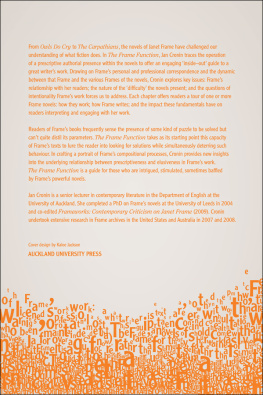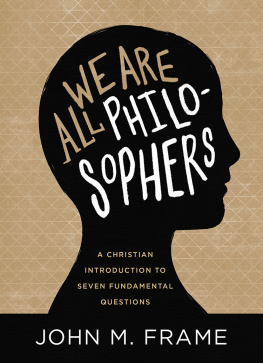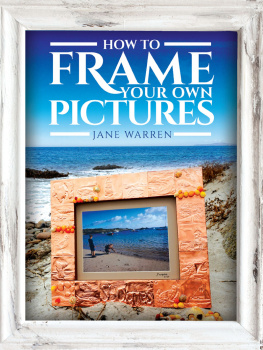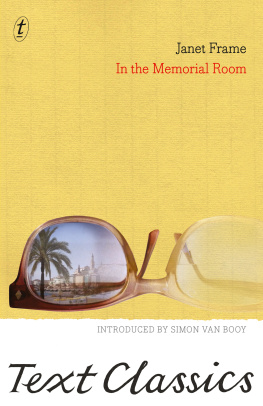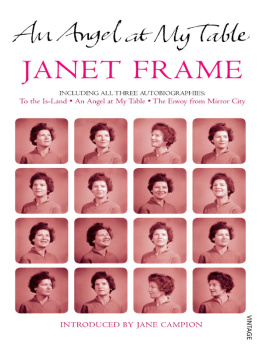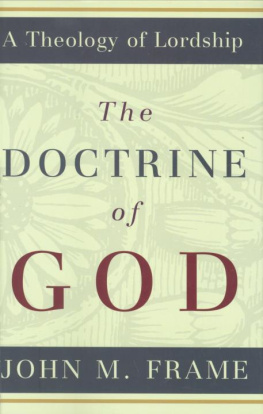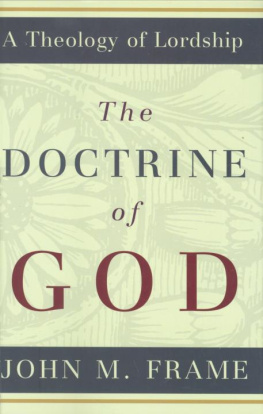The Frame Function
An InsideOut Guide to the Novels of Janet Frame
Jan Cronin
Contents
The Adaptable Man
Owls Do Cry & Faces in the Water
A State of Siege & The Rainbirds
Scented Gardens for the Blind & Daughter Buffalo
The Edge of the Alphabet
Intensive Care
The Carpathians
Living in the Maniototo & Towards Another Summer
Preface
I NEVER MET JANET FRAME IN THE FLESH. I first encountered her work in my final year as an undergraduate at Trinity College, Dublin, in 1999, thanks to Stuart Murrays inclusion of Living in the Maniototo on the syllabus for his New Zealand Nationalisms paper. Living in the Maniototo was the bait that lured me away from medieval literature; and when Paul Millar gave me the opportunity to teach Intensive Care on his New Zealand literature paper at Victoria University of Wellington, the following year, I was permanently hooked. Both Murray and Millar would remain integral to my Frame narrative. Stuart was an exemplary guide for my initial Frame ventures (which inform the current work to varying degrees) in the form of a PhD thesis at the University of Leeds from 2001 to 2004; and Paul, along with Patrick Evans who provided valuable feedback, was instrumental in supporting and encouraging this book.
Three experiences were crucial to the evolution of this project. The first involved the navigation of Frames novels with successive graduate classes at the University of Auckland from 2007 to 2010. My students have my gratitude and respect. The second was the opportunity to co-edit Frameworks: Contemporary Criticism on Janet Frame. I learned a great deal from working with my co-editor, Simone Drichel, and with our contributors over the course of 2006 and 2007. The third, and the one which had the most profound effect on the work that follows, was the opportunity to research archives of Frames personal and professional correspondence in 2007 and 2008.
I owe a large debt of thanks to Frames literary executor, Pamela Gordon, and to the Janet Frame literary estate. I am grateful for permission to access restricted archives, and even more so for permission to quote the Frame correspondence and manuscript material included in this work. The Janet Frame Literary Trust kindly gave permission for the use of the extract from Living in the Maniatoto on the front cover of the book, and permitted, via the Wylie Agency, extensive quotation from published Frame works. Pamela helpfully responded to specific queries regarding the most recent editions of The Edge of the Alphabet and Scented Gardens for the Blind and about the dust-jacket of Daughter Buffalo, and drew my attention to two relevant letters from Frame to Charles Brasch (cited pp. 62, 90). My thanks, too, are due to the Frank Sargeson Trust for permission to reprint quotations from Sargesons letters that appear in Michael Kings biography of Frame. I was also touched by the generosity of spirit that moved Paul Matthew St Pierre in 2010 to allow me to read and quote from the manuscript of his forthcoming work Janet Frame: Semiotics and Biosemiotics in her Early Fiction.
My time in Frame archives had previously left me in awe of the kindness of strangers. I am very grateful to George Braziller for taking the time to meet with me in New York in March of 2008 and for allowing me access to his remaining Frame papers (most are now housed in the Archives of George Braziller Inc. at Princeton University), and for granting permission to quote from certain Frame titles in North America. I thank Random House Australia, specifically Meredith Curnow and Cristina Briones, for permission to quote from certain Frame titles in Australia. Sandra Stelts, curator of Rare Books and Manuscripts at the Special Collections Library at Pennsylvania State University is a most welcoming and generous host; my thanks to Sandra and her husband, Ron, for making my time in State College so pleasant. Tim Curnow graciously responded to my request for access to particular Frame material by directing me to Fiona Inglis, who, along with Frames estate, kindly granted me permission to access the Records of Curtis Brown (Australia) Pty Ltd at the National Library of Australia. Once there, Matthew Stuckings was notably helpful, and I am forever grateful to the security guard, Paul, who drove me to the airport when I was left in the lurch by the Canberra taxi system. My thanks also to the staff at the Hocken Collections in Dunedin and at the Department of Rare Books and Special Collections, Princeton University Library. I would like to express my gratitude to the University of Auckland New Staff Research Fund, and to the Universitys generous funding of research leave, for making these research trips possible, and to the Department of English Research Committee for their extensive support of this project.
Back in Auckland, I was fortunate to have a succession of meticulous research assistants. Many thanks to Stella McKay, Elizabeth Welsh and Anna Cushen for their library hunts and citation checks, and especially to Anna for compiling base versions of the index as well as the Bibliography for this work. Annamarie Jagose, Michael Mintrom and the Faculty of Arts Emerging Research Excellence workshops in 2009 changed my working life and facilitated the completion of this book. Sam Elworthy and Anna Hodge at Auckland University Press responded patiently and supportively to my many queries. Thanks are also due to Damian Love for his attentive work as copy-editor. I would like to acknowledge the collegiality of the Department of English at the University of Auckland, and in particular the support I received from Tom Bishop, Brian Boyd, Alex Calder, Michael Neill, Roger Nicholson, Selina Tusitala Marsh, Peter Simpson, Stephen Turner, Lee Wallace, Joanne Wilkes and Elizabeth Wilson. I would also like to thank Mary Paul and apologise for a nave and ill-informed 2000 review.
This work bears an intellectual debt to my university life before Frame. Helen Cooney inspired me as a budding medievalist in Dublin in the late 1990s; among many other things, she taught me about texts and glosses and introduced me to Maureen Quilligans work on allegory, and to Eric Jagers work on the ideology of the Fall (which I ingested, and, as a result, spent far too much time in subsequent years in the bowels of the Leeds university library with the Fathers of the Church series). It was the synergy (and, crucially, the misfit) between ideas bequeathed to me by Cooney, Quilligan and Jager and what I found in Frames texts that initially led me into Frame studies. These dynamics are manifested in .
Over the last decade certain people have consistently supported my Frame endeavours with notable hospitality and also tolerance and good will towards the social and familial costs. In particular, I thank M. Tate McAuliffe, Gerry Murphy (and his many alter egos), Mary and Jim Rourke, Monica Kennedy and Brian OGorman, Ann and Paul Kenny, Anne MacSweeney, Rachel Cronin, Craig Hurley, Maurice Cronin and John and Beryl Kreig. Most of all, I thank Daniel Kreig. This book is dedicated to him.
THERE ARE SOME THINGS YOU SHOULD know before reading this guide. Earlier versions of material contained in Chapters 1, 3 and 5 appeared in Frameworks: Contemporary Criticism on Janet Frame, Amsterdam, Rodopi, 2009, pp. 323; the Journal of Commonwealth Literature, vol. 40, no. 1, SAGE, 2005, pp. 519; the Journal of New Zealand Literature, vol. 23, no. 2, 2005, pp. 7991; and the

